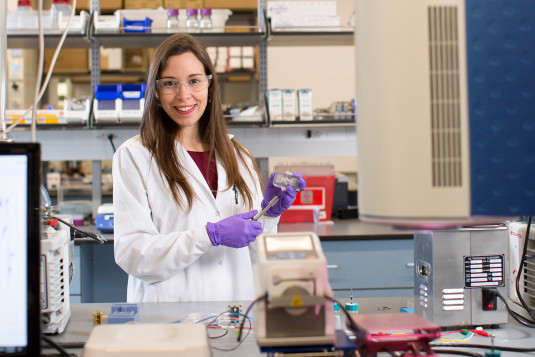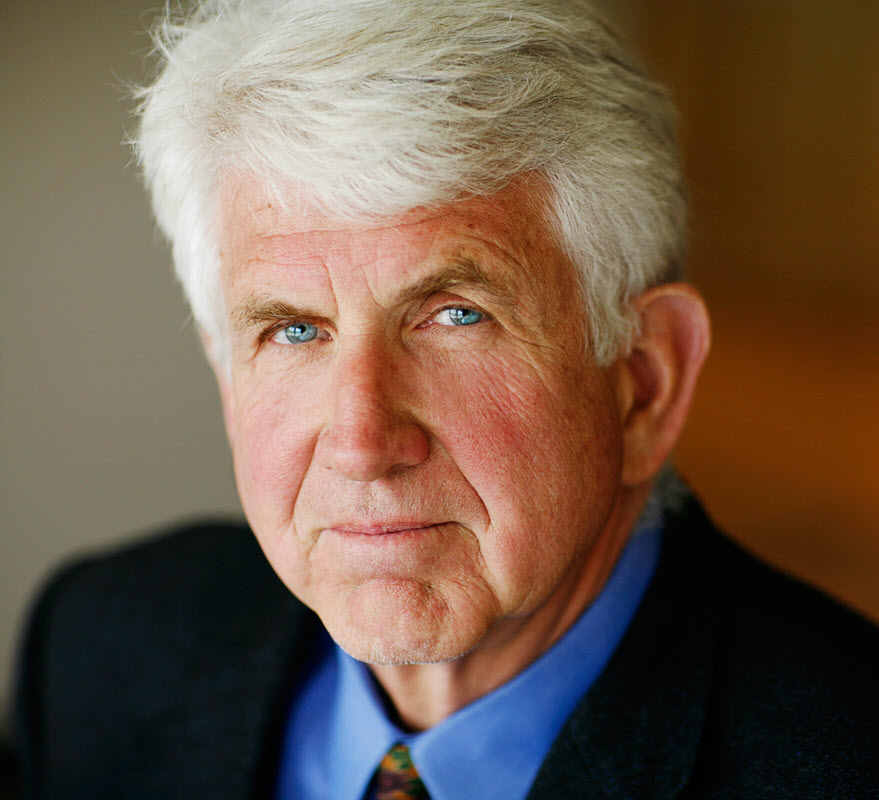
Defying the doubters
Inspired by his father and his eighth-grade science teacher, Bob Metcalfe developed an early interest in science and engineering. While pursuing these passions as an adult, he decided to minimize the number of wires needed to connect office computers to printers and the internet. In a 1973 memo, Metcalfe proposed his idea of the Ethernet as a solution. What followed was a long but successful journey to develop, patent, and commercialize this wire, which is used today all over the world.
Due to his scientific contributions, Metcalfe was awarded the National Medal of Technology and Innovation and was inducted into the National Inventors Hall of Fame.
12 min read
Each month, our Journeys of Innovation series tells the stories of inventors or entrepreneurs whose groundbreaking innovations have made a positive difference in the world. Hear it in their own words or read the transcript below. To learn about other National Inventors Hall of Fame (NIHF) inductees or National Medal of Technology and Innovation (NMTI) recipients, visit greatest in American innovation or greatest innovators.
Do you know an innovator or entrepreneur with an interesting story?
BOB METCALFE: You know, billions of Ethernets are shipped every year; billions! And it crops up everywhere. F16s have Ethernet in them, and the International Space Station has Ethernet in it, and every time I go visit a startup, the first thing I look for is all of the Ethernets in it.
LINDA HOSLER: It’s hard to imagine the world without Ethernet. The single, once controversial cable is now ubiquitous, connecting computers of all shapes and sizes, providing a standard of connectivity that is fast and cheap.
I’m Linda Hosler from the United States Patent and Trademark Office. Bob Metcalfe’s work was ahead of its time. The concept of connecting multiple computers to the internet using one shared wire was unheard of. And, naturally, there were those who doubted his efforts. Metcalfe persisted until he convinced the world of the power of his invention.
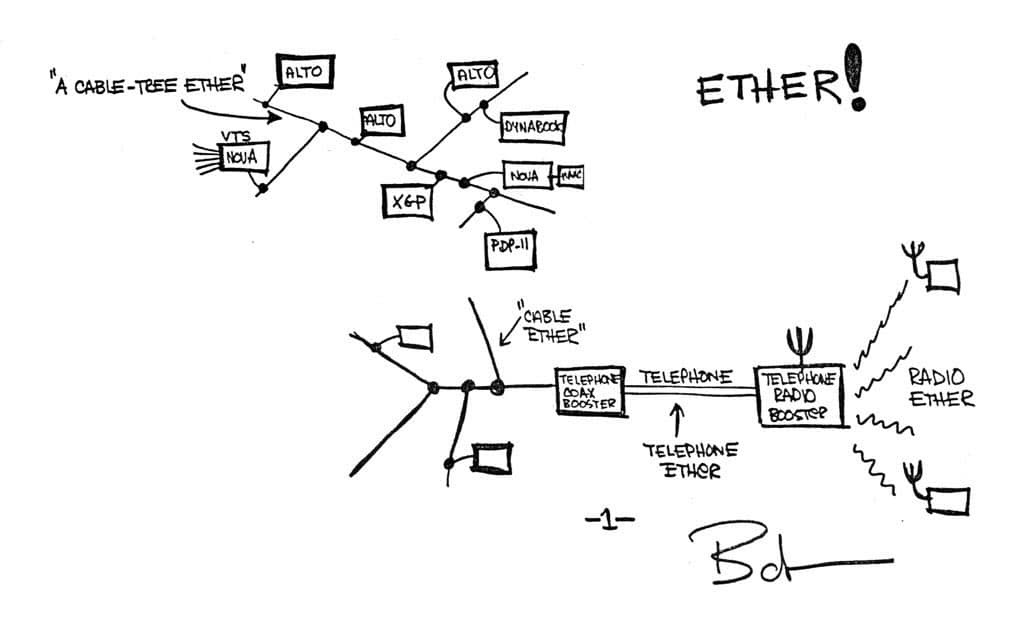
Bob Metcalfe's 1973 sketch of his original "Ethernet" vision. Photo courtesy of Bob Metcalfe and the Palo Alto Research Center Inc., a Xerox Company.
LINDA HOSLER: Invention comes from identifying a problem that needs to be solved. Could you talk a little bit about what led you to the problem that you wanted to solve and how you went about solving it?
BOB METCALFE: I guess we’re going to talk about my invention being Ethernet, which is covered by a U.S. patent—now expired—and the opportunity to solve a problem was given to me at Xerox Research Center where, at the research center, we decided in 1972 or [197]3 to put a computer on every desk, which in 1973 was outrageous. The problem I was trying to solve was how do we connect all of these desktops to the printer and to the internet?
“All previous networking technologies had used too many wires. . . . we took it as a goal to have as few wires as possible, and we got all of the way down to one.”
LINDA HOSLER: Did you have a eureka moment or anything? Could you set the scene for us on how you solved the problem, or was it just, you know, nose-to-the-grindstone kind of work?
BOB METCALFE: It was more of a standing-on-shoulders work. So, Ethernet was invented in a memo that I wrote on May 22, 1973, and by then I had been working on the internet, which was then called the ARPANET, for three years.
And so there were a bunch of eureka-ish moments, but mostly it was—Ethernet came from packet switching. And so the Ethernet is a packet-switched local area network. And then the particular approach we chose was to minimize the number of wires. All previous networking technologies had used too many wires with complicated connectors and so on. So, we took it as a goal to have as few wires as possible, and we got all of the way down to one.
There was another network around called the Aloha Network at the University of Hawai'i, which was a packet radio network; of course, a packet radio network has zero wires. So that would have been desirable. But the Aloha Network only ran at 4,800 bits per second, which is not nearly fast enough, and the modem was as big as the personal computer, and as expensive, so radio was not practical in 1973. So we had to defer Wi-Fi for another 25 years while the chips got developed to go wireless, go from one wire down to zero.
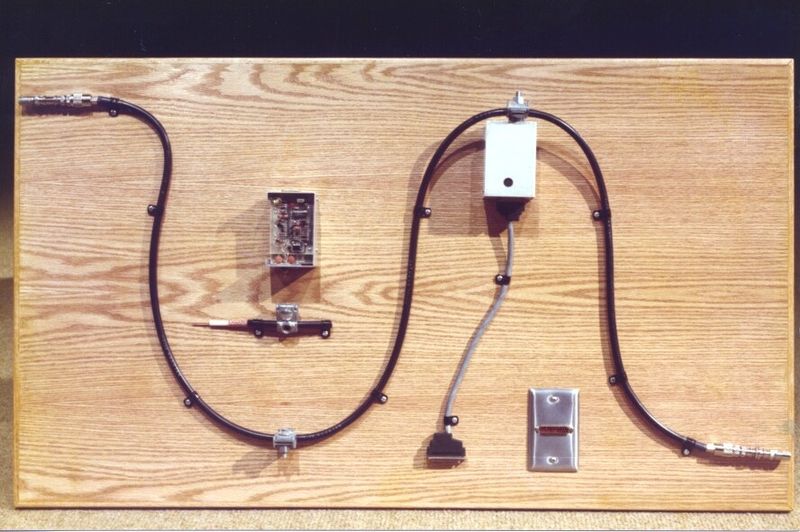
The Ethernet cable. Photo courtesy of Bob Metcalfe.
So this one wire that we used for Ethernet, we called it “the Ether,” and it was a big, thick cable that ran down—half-inch cable—that ran down the corridor, and then PCs in each office would tap into that coaxial cable and then thereafter be able to send data packets into that cable.
The one remaining problem was: How would those various PCs share that cable? And we got the idea—and this is as close to a eureka moment as we get—I accidentally read a paper coming from the University of Hawai'i by Norm Abramson about the sharing of the radio channel in this packet radio network in Hawaii. And the key idea was to use randomized re-transmissions.
And so Ethernet adopted that method of sharing—sharing the cable using randomized re-transmissions, which meant the attached PCs would send the packet, and if the packet went through, fine, but if it was interfered with by another station trying to send a packet, then the two stations would choose a random number and count it down and try again. The point of the randomization was to keep the transmissions from repeatedly colliding and so that sharing of the cable could be achieved.
So the eureka moments of Ethernet had to do with borrowing packet-switching ideas from the internet itself and then channel-sharing ideas, randomized re-transmission from the Aloha packet radio network.
“At one point, my co-developer, Dave Boggs . . . said this funny thing. He said, ‘Ethernet does not work in theory, only in practice.’”
LINDA HOSLER: Was there a time where—a specific time you remember that you felt that you failed or you really struggled with an aspect of the invention?
BOB METCALFE: Because IBM and General Motors opposed Ethernet, both of them with their own network technologies, the attacks on Ethernet during the 10 years that we tried to standardize it were vicious, and at one point, my co-developer, Dave Boggs, whose name is on the patent, said this funny thing. He said, “Ethernet does not work in theory, only in practice.”
LINDA HOSLER: Huh. That’s a good line.
BOB METCALFE: These guys kept inventing theories showing Ethernet can’t work, but we had thousands of them deployed, and they were working just fine.
LINDA HOSLER: I want to switch gears a little bit and ask you a little bit about your background and your childhood. Was there any specific person or experience that first piqued your interest in science and technology?
BOB METCALFE: Well, my father was a test technician, and his specialty was gyroscopes. He was in the aerospace industry on Long Island. He was not an engineer, but he had, in our basement, a shop. And he brought home from work little screws and bolts and scopes and, you know, little doo-dads. And at some point he helped me build a train set. But then we went one step further. We used some of the doo-dads my dad brought home from work to build a control system with toggle switches and neon lights and relays for controlling the trains.
And then in eighth grade, my science teacher, Mr. [Lester] Gosier, convinced me to take the toggle switches and the lights and the relays and build a computer out of them. It really wasn’t a computer; it was a big box that could add any number between one, two, and three, to any other number between one, two, and three, and come up with the sum between two and six. So that was sort of the beginning.
A slight digression—a few years ago [I was] inducted into the Bay Shore High School Hall of Fame. Five of us were inducted into this Hall of Fame at a restaurant in Bay Shore, Long Island. And we were suddenly asked to give a two-minute acceptance speech for our induction into the Hall of Fame, and we really hadn’t prepared.
But I decided to use my two minutes reflecting on how valuable—and I admired my eighth-grade science teacher, Mr. Gosier, who really got me started, and picked up where my dad left off, and got me more and more interested in building things, and science and engineering.
And after I finished my two minutes of remarks, the entire audience of 100 people all looked left. So I looked left. And in the corner in the back was a man in a wheelchair, and it was Mr. Gosier.
LINDA HOSLER: What an amazing story. That’s fantastic!
"My eighth-grade science teacher . . . got me more and more interested in building things, and science and engineering."
BOB METCALFE: Imagine closing the loop. That was 1959 I took his class in eighth-grade science, and built my little computer. I even remember the grade he gave me. I guess he was into grade inflation; the grade I got on my little computer was A triple plus [A+++], superior.
Anyway, I got to thank Mr. Gosier decades later. He’s since passed on, but I lucked out, and I managed to close the loop with him, decades later.
LINDA HOSLER: I’m sure he was so thrilled. Did you get to speak with him afterwards, personally?
BOB METCALFE: Yeah, he didn’t remember me much because it’d been so long, but, uh, we had our moment.
LINDA HOSLER: We are the United States Patent and Trademark Office, so of course I have to ask you about intellectual property as well. Could you talk a little bit about the role that patents and IP played over the course of your career?
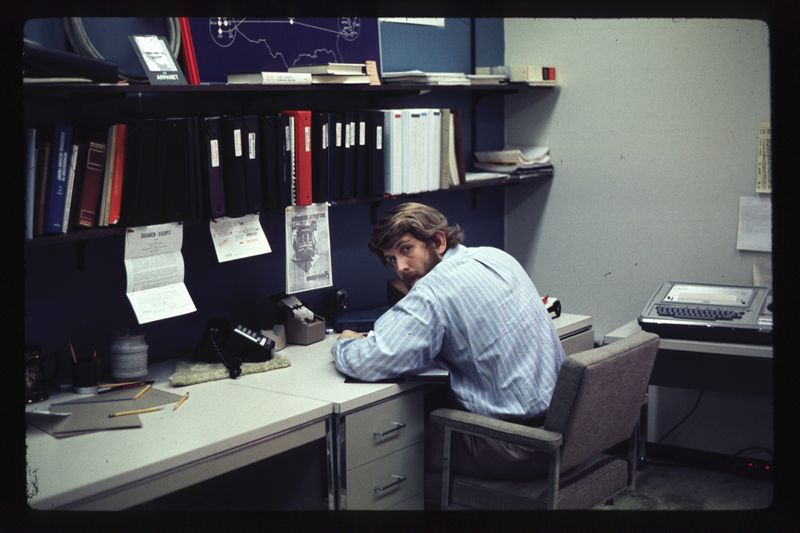
Bob Metcalfe circa 1973. Photo courtesy of Bob Metcalfe.
BOB METCALFE: My first interaction with patents is that the patents which Xerox held enabled them to hire me to be a scientist. The Xerox Palo Alto Research Center was paid for by ownership of, and profits from, inventions protected by patents owned by Xerox Corporation.
As soon as Ethernet was working, Xerox sent in an attorney, as was their practice, to see if there was something patentable there, and he and I—John Chapman was his name—he and I drafted the Ethernet patent.
And then, actually, we did four patents. One of them was sort of the principal one and then three others lesser. My name was on all four of those patents but with different mixes of co-inventors.
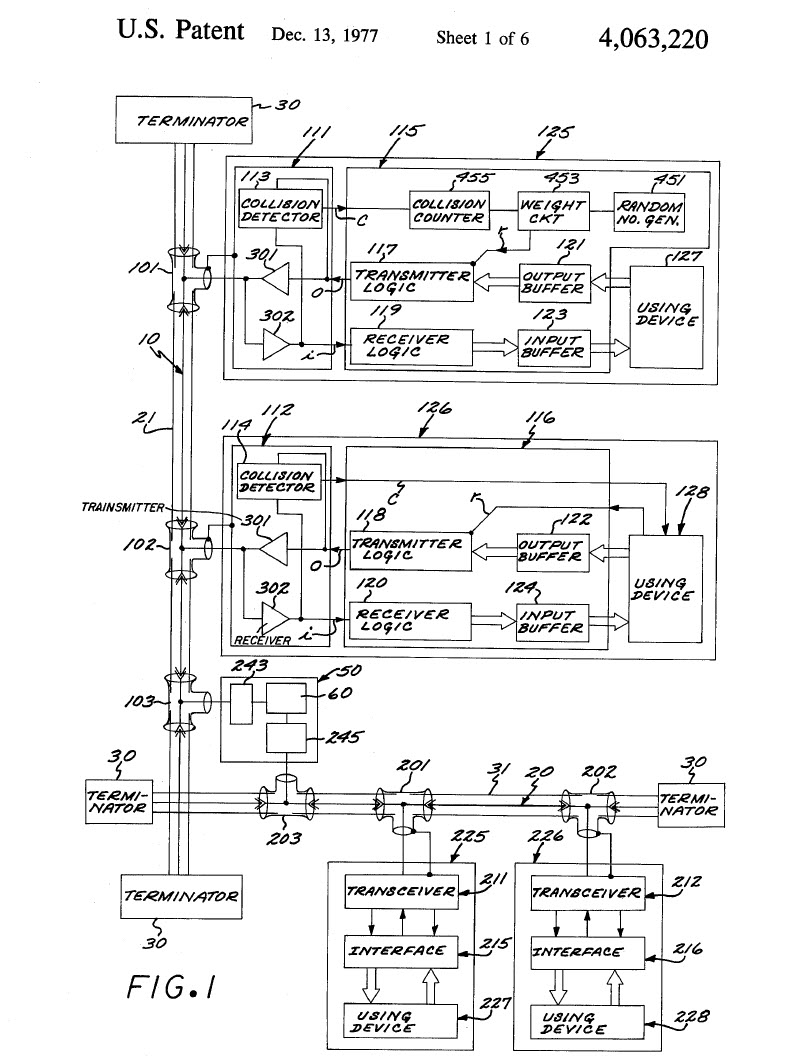
Figure 1 of U.S. patent no. 4,063,220, titled "Multipoint data communication system with collision detection.”
And then the patent issued, and then, to make a long story short, we all decided that Ethernet needed to be an industry standard. And the IEEE, the Institute of Electrical and Electronics Engineers, had a standards-making activity, so we created a project there—IEEE Project 802—whose purpose was to standardize Ethernet for use by all manufacturers. And the IEEE played hardball with Xerox and said, "We will not standardize your Ethernet thing unless you agree to license the patent at a nominal charge."
So the patent accomplished two things: One is it gave us all freedom to operate. We wouldn’t have people come in and try to tax us or block us. And the second use of the patent was that Xerox and the IEEE were reluctant—I forget exactly how they did this—but they wouldn’t license you the patent unless you agreed to conform to the standard. You couldn’t get the use of Ethernet without building an Ethernet that was compatible with the standard that the IEEE was doing.
And by the way, Ethernet—the word "Ethernet"—which I made up in my memo on May 22, 1973, got, uh, trademarked. When it was decided that Ethernet would be a product of Xerox Corporation, they changed its name, and they called it the Xerox Wire. And then a bunch of ads were made and appeared on television advertising the Xerox Wire, which was the commercial name of Ethernet.
But then when we convinced the industry to make Ethernet a standard, they said, “Well we’ll make it a standard, but we’re not going to call it the Xerox Wire.” So the question came up, what were we going to call it? And someone pointed out that Ethernet was a trademark of Xerox Corporation. So we all agreed to go back to the old name, and it was at that point that Xerox put the Ethernet trademark back into the public domain. It became known as Ethernet again, which it is today.
LINDA HOSLER: So given your own experiences, and speaking to a wide audience, what advice do you have for other innovators?
BOB METCALFE: Well, innovation is a high calling. Startups are, in my experience, a very effective tool for innovation. Startups are vulnerable because the status quo is resourceful and vicious. So startups need every tool they can get, and that includes patents. So patent what you can, and execute rapidly. That’s my advice.
LINDA HOSLER: Invention does come easily to some, and it’s more challenging for others. What do you think it takes to be a successful inventor?
BOB METCALFE: You have to know something. And this is something I tell our students here who are dying to start companies is, what do you know? What do you know that other people don’t know that’s really valuable?
"Patent what you can, and execute rapidly. That’s my advice.”
LINDA HOSLER: Looking back at the impact of your invention, what are you most proud of?
BOB METCALFE: You know, billions of Ethernets are shipped every year; billions! And it crops up everywhere. F16s have Ethernet in them, and the International Space Station has Ethernet in it, and every time I go visit a startup, the first thing I look for is all of the Ethernets in it. I guess it’s the, to get back to your question, it’s the way that people have been able to build on the facility of Ethernet to do new and wondrous things.
They, um, so Ethernet just provides this basic connectivity. It does it really fast, and really cheap, and in a standard way, so that’s its plusses. But then these other people pick it up and go off and do amazing things with it. It is very gratifying to peek inside the secret box and see the Ethernet cable there.
LINDA HOSLER: It was Bob Metcalfe’s commitment to innovation that set the foundation for the connectivity we all share today. Bob’s development of the Ethernet has even made sharing this story possible. We want to thank him for speaking with us about his journey of perseverance, and for the patented technology that connects us all. From the USPTO, thanks for listening.
Credits
Produced by the USPTO Office of the Chief Communications Officer. For feedback or questions, please contact inventorstories@uspto.gov.
Interview by Linda Hosler. Cover photo on homepage and portrait at top of this page courtesy of Bob Metcalfe. All other photos credited in captions. Additional contributions from Mandy Kraft, Lauren Emanuel, Marie Ladino, Jay Premack, and Eric Atkisson.


